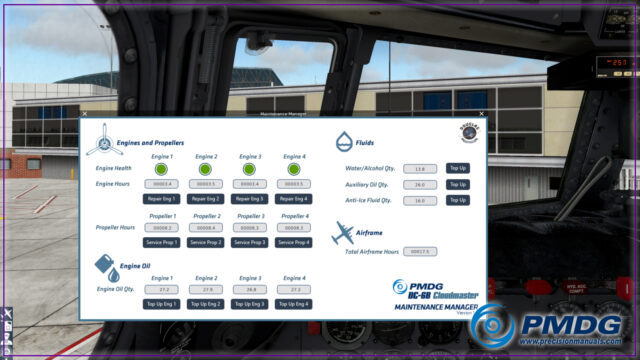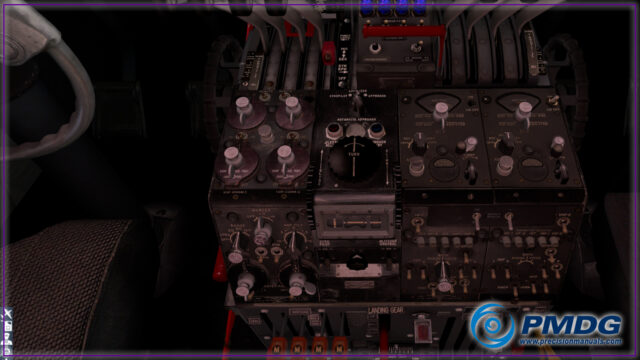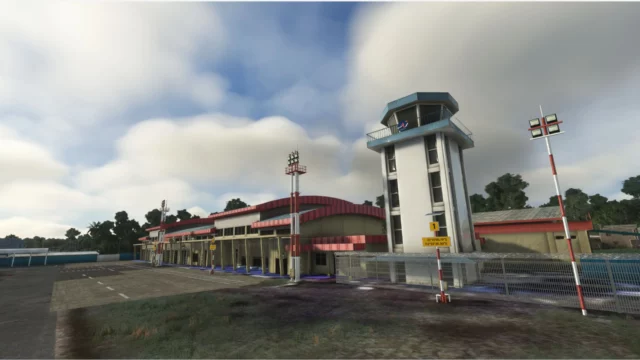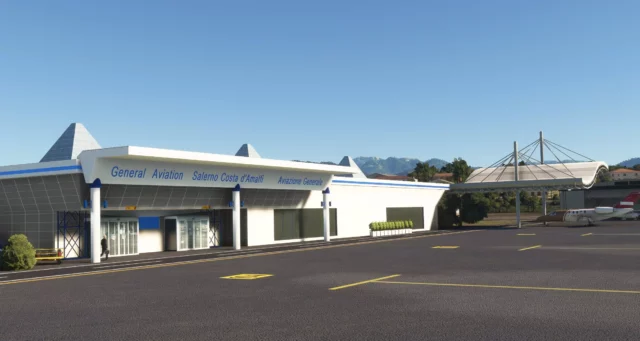
Another PMDG update has been posted last night. You may find the full press release and the associated previews below, or also on the Avsim Forum.
“Captains! On our Facebook page, we have been giving you occasional glimpses of the PMDG DC-6 with images taken by our beta team as they make good use of her in the test flight environment.
Today, I have a bit more in depth update to begin showcasing for you what we believe to be one of the finest classic propliner simulations yet offered to the sim community. The PMDG DC-6 Cloudmaster will come to you with the DC-6B and DC-6C variants, a range of free liveries and an in-depth electronic manual to teach you how to operate this extremely comprehensive simulation of the classic airliner.
The initial release will take place on the X-Plane platform, with FSX/FSX-SE and Prepar3D versions to follow. First up, let’s take a look at how you will manage the loading of the PMDG DC-6: In our modern airliner series of products, we have you managing the loading, fueling, maintenance and servicing of the airplane via menus buried in the FMS. The DC-6 doesn’t have an FMS, which presented us with some interesting decisions to make when it comes to how you should manage these aspects of the simulation in a way that is efficient, clean and intuitive. To that end, we have added a couple of icons to take you right to the key components you need to control.
This page is the loading page, which allows you to manage all aspects of loading the airplane in a simple, easy to understand layout that gives you a clear idea what you are changing and the impact it has on your overall loading configuration. You can use the quick-set buttons to give you an “in the ballpark” fuel load, or you can set your desired fuel weight right to the pound in each tank as needed. The payload can be quickly managed by entering the amount of baggage and cargo, as well as a headcount of passengers.

With use, your DC-6 is going to need routine and non routine servicing. The Maintenance Manager menu is where you will go to keep an eye on the health of your all-important powerplants. Across the top we have provided a simple, colored icon to give you a quick review of the general health of your engines. You can see your total engine and propeller hours, which accumulate as you operate the airplane. Of course- key to the health of any engine is the engine oil, and you will manage and replenish that volume here. Water, for your water-meth injection system (a must for high power takeoffs!) along with auxilliary oil and anti ice alcohol is included. All of these things are items to check prior to departure, lest you find yourself slogging through a line of weather with unreliable engines and insufficient fluids… Not a good position in which to find yourself, even with four Pratt & Whitneys…
Speaking of the Pratts… Take some time to read through the flight manual, and absorb the engine handling tips. Use the power setting charts. If you don’t- you will be spending more time looking at this maintenance page than you probably want… Remember- this airplane is Old School. Speaking of old school- lets talk about the full, all axis LNAV/VNAV/LPV capable autopilot with thrust control for a moment. Yeah… There isn’t one. Did we mention that this airplane is Old School?

The DC-6 comes with a fully modeled, highly accurate simulation of the Sperry A-12 autopilot. This autopilot WILL make your flying much easier, but it shouldn’t be confused with the full-flight wonders in use with modern jets today. You have to learn the quirks of this autopilot, and adjust your flying accordingly. There isn’t an on/off switch- but instead you have to configure the airplane properly and then bring the autopilot on line to maintain what you have done. Think of this autopilot as more of a “state maintenance” tool… If used properly it will really become a joy to operate. (Again- read up on this gem in the manual- it will make your flying far more enjoyable!) Let’s shift focus to a bit of visual enjoyment. (See what I did there? :-))

This is one of my favorite shots in the sequence. As many of you know, I spend a fair share of time flying an old propliner- and this image tickles my funny bone because it shows just how incredibly well detailed the textures and lighting have turned out in X-Plane. The surface of the panel, along with paint chips and gently worn grim, the engraved metal placards providing limitations and instructions… All of it is done with incredible attention to detail. You can almost smell the paint, leather and machine oil smell of this beautiful old classic. Okay- so lets look at something fascinating that the development team did, because is is an important characteristic of the original DC-6:

Look closely at the gyro compass located on the lower right corner of the pilot’s instruments in this image. Look at the index line on the gyro face, and the 45 and 90 degree index hashes around the outside face of the compass.
Notice anything?
Notice anything?
They are glowing…
Yeah- this is the level of detail we have taken this simulation in order to make it as immersive and realistic as we can. While we are looking at this image, look at the gauges in the center of the panel and focus on the reflection on the surface of the glass… This is what it is like sitting in the cockpit of a classic old propliner. Sometimes, the glass reflection blocks your view of what you want to see, and you need to move around a bit to get the right angle in order to see through the glass on that gauge in the corner of your field of vision. We give you that level of detail here…
(And check out the soft blue illumination of the indicators on the pedestal… since we are there… We have done quite a bit with the use of materials and lighting effects on this airplane. X-Plane gives us some really interesting tools to work with in the lighting department.
Speaking of tools- lets talk a bit about what you will be using the navigate the airplane. We sent a team to visit with NCA out at FYWE airport in Windhoek, Namibia. Since the DC-6 is a relatively rare bird to find these days, we decided early on not to just model THE airplane, but to model a SPECIFIC airframe, and NCA’s V5-NGG. (To that end- we even modeled an inaccurate placard- but I’ll get to that later!)
Since we were going to model THEIR airplane, we are giving you precisely the equipment NCA has installed in their airplane. A quick rundown of what is installed: KX-155 comm/nav package, KR-87 ADF, KDI-572 DME units, dual selectable Bendix KT67A transponders and KMA24 audio panels- all fully functional…

All of these pieces of equipment are modeled accurately, with their own unique quirks and behaviors, so as to give you the very best possible simulation of what it is like to operate this magnificent, classic airliner across the world in long and short range operations.
I mentioned that we have even modeled a few inaccurate placards in the airplane- because we are modeling a SPECIFIC airframe- and we wanted to model her faithfully. In the image below, we have turned on the night lighting in the cockpit in order to give you an idea of the nice ambient glow that you get by turning the knobs up to bright while you work. It is obvious from the image that the lighting is red-lensed, creating a nice warm red glow that was popular to protect the pilots’ night vision back in the 50s/60s era airliners.

Thing is… The lighting that cascades across the overhead panel was originally white. So when you reach up to rotate that dimmer knob, the placard will tell you that the dimmer controls the white flood lighting… but the bulb is clearly red…
Any bets how many folks are going to come running here to tell us that we don’t know the difference between red and white? 🙂 Okay- I think that is enough for today… I’ll be back later in the week with more!”





![[Video🎬] New Trailer 4K for Turkish Airports MSFS by SceneryTR Design – Istanbul – Ankara Trabzon by SIMMARKET](https://www.simflight.com/wp-content/uploads/2024/04/SceneryTR_thumb.jpg)

